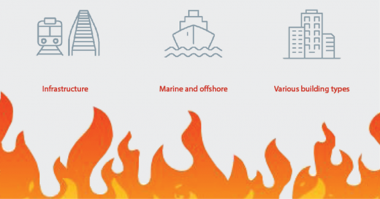On January 28, Danfoss hosted its 20th annual press briefing during the 2015 AHR Expo in Chicago. This year’s press briefing included discussions of four industry megatrends impacting the heating, ventilation, air-conditioning, and refrigeration (HVACR) industry, and showcased a successful retrofit project with a 3-month payback.
Danfoss North America President John Galyen stated, “Danfoss is uniquely positioned to support our customers as the industry faces changing standards and regulations and moves toward low-GWP refrigerants and more energy efficient requirements.” He opened the briefing by discussing four megatrends impacting industry: an HFC phasedown, increasing utility peak loads, changing energy use in buildings, and a widening workforce gap.
Mark Menzer, director of public affairs, discussed the path to achieving the next level of efficiency, which he suggested will come from a whole building system approach because industry is reaching a point of diminishing returns on the energy efficiency of discrete components. Menzer also highlighted the aggressive activity from the US Department of Energy, including the 19 new energy efficiency rules it has planned in 2015, all of which focus on components instead of systems.
Jeff Staub, application engineering manager, then underscored the importance of looking to energy efficiency through a whole building system approach by examining some of today’s existing technologies. This includes, he pointed out, variable speed, oil-free, magnetic bearing compressors like the Turbocor VTT series introduced by Danfoss and which was the recipient of the 2015 AHR Expo Innovation Award in the Green Building category and named the Product of the Year.
However, many available high efficiency technologies, like variable speed, are under deployed, Galyen explained, causing the changing energy use in buildings to be a mega challenge for the industry. Mike Schwartz, CEO of Daikin Applied Americas, the largest global HVAC manufacturer for commercial, industrial and residential air conditioning systems, and the global air conditioning leader, elaborated on this point: “Owners are commonly not aware of how their system is operating. In fact, over 70 percent of rooftop units are still not running properly.”
Daikin Applied was the first to meet DOE’s Rooftop Energy Challenge with their Rebel product, which achieves an 84 percent energy savings above the ASHRAE 90.1 standard. If all 3- to15-ton rooftop units installed in the US were converted to the Rebel variable speed technology, the estimated annual energy savings would be greater than $5 billion or 55,000 GWh – enough to power over 5 million homes each year.
“The demand for high efficiency equipment is increasing, including variable speed equipment that not only matches the load, but also can be tied to a smarter grid and respond to peak events,” Galyen noted during his discussion of the megatrends. “The focus is not only on new buildings – and can’t be if we want to make a measurable impact. New buildings represent only one percent of the building stock.”
To this point, Gene Ameduri, president of Enerlogics Networks, an organization focused on bringing intelligent technology solutions for energy efficiency, demand response, energy supply, renewable power, and facility operations, presented a retrofit project of the U.S. Steel Tower in Pittsburgh, Penn. The central plant for this 64-story commercial office building had two 3,500-ton and one 1,500-chiller as well as two 1,600-Bhp boilers. The retrofit consisted of (12) 200-HP variable frequency drives applied on supply air fans and (12) 25-HP variable frequency drives on the return air fans. The project had a demand savings of 1,260 kW and energy savings of 6,729,000 kW, yielding a 7-month payback. The Pennsylvania Act 129 incentive contributed another $225,000 in savings for a total project payback of less than 3 months.
This kind of success, Galyen noted as he closed the press briefing, is only part of how Danfoss continues to focus on “helping customers meet individual challenges, while meeting industry guidelines for regulations.” It is a delicate balance, but one that can be achieved with education and the right application.





Comments